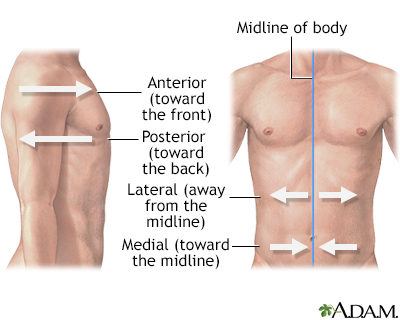Lateral traction
Definition
Lateral traction is a treatment technique in which weight or tension is used to move a body part to the side or away from its original location.
Information
Traction can be used to treat or reduce any joint dislocation or bone fracture by applying tension to the leg or arm with weights and pulleys to realign the bone. For example, it may be used to help line up a broken bone while it heals. Traction can reduce pain related to the injury. Traction can also be used during surgery to allow your surgeon to evaluate your joint better.
Traction as a treatment involves the amount of tension or force used, the length of time the tension is used, and the means used to maintain the tension.
Gallery

References
Dawson J, Atassi O, Sun D, Sheth M. Emergency care of musculoskeletal injuries. In: Townsend CM Jr, Beauchamp RD, Evers BM, Mattox KL, eds. Sabiston Textbook of Surgery: The Biological Basis of Modern Surgical Practice. 21st ed. St Louis, MO: Elsevier; 2022:chap 19.
Waddell JP, Wardlaw D, Stevenson IM, et al. Closed fracture management. In: Browner BD, Jupiter JB, Krettek C, Anderson PA, eds. Skeletal Trauma: Basic Science, Management, and Reconstruction. 6th ed. Philadelphia, PA: Elsevier; 2020:chap 7.